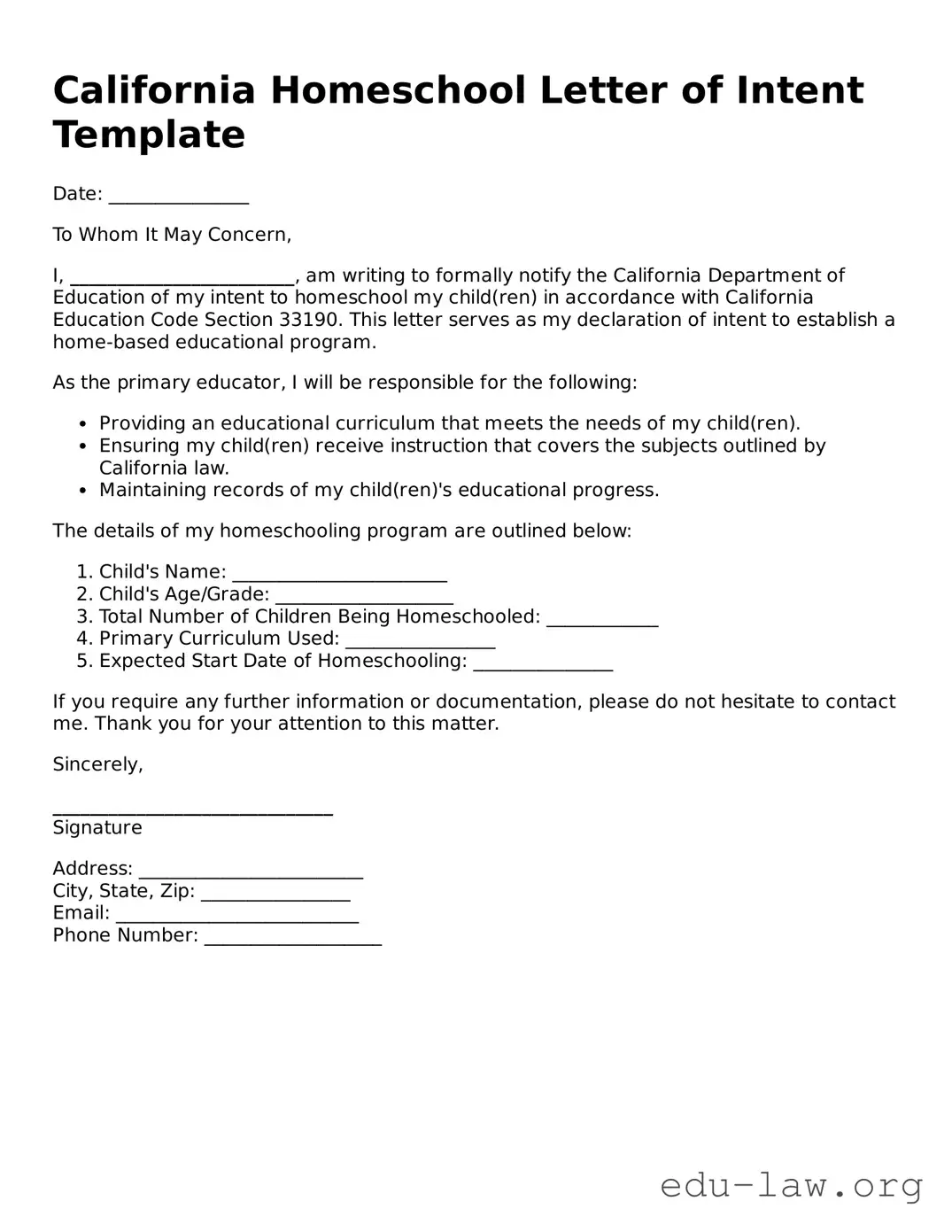California Homeschool Letter of Intent Template
Date: _______________
To Whom It May Concern,
I, ________________________, am writing to formally notify the California Department of Education of my intent to homeschool my child(ren) in accordance with California Education Code Section 33190. This letter serves as my declaration of intent to establish a home-based educational program.
As the primary educator, I will be responsible for the following:
- Providing an educational curriculum that meets the needs of my child(ren).
- Ensuring my child(ren) receive instruction that covers the subjects outlined by California law.
- Maintaining records of my child(ren)'s educational progress.
The details of my homeschooling program are outlined below:
- Child's Name: _______________________
- Child's Age/Grade: ___________________
- Total Number of Children Being Homeschooled: ____________
- Primary Curriculum Used: ________________
- Expected Start Date of Homeschooling: _______________
If you require any further information or documentation, please do not hesitate to contact me. Thank you for your attention to this matter.
Sincerely,
______________________________
Signature
Address: ________________________
City, State, Zip: ________________
Email: __________________________
Phone Number: ___________________
